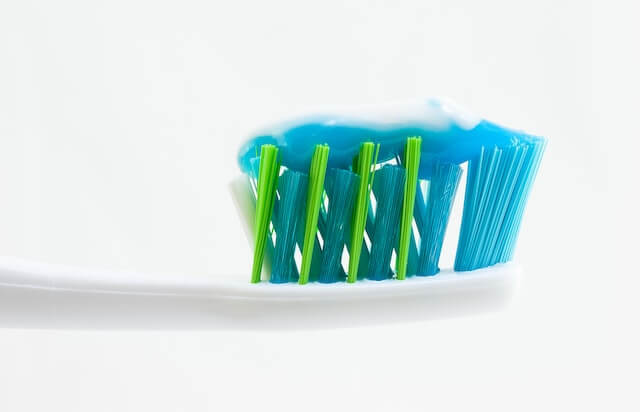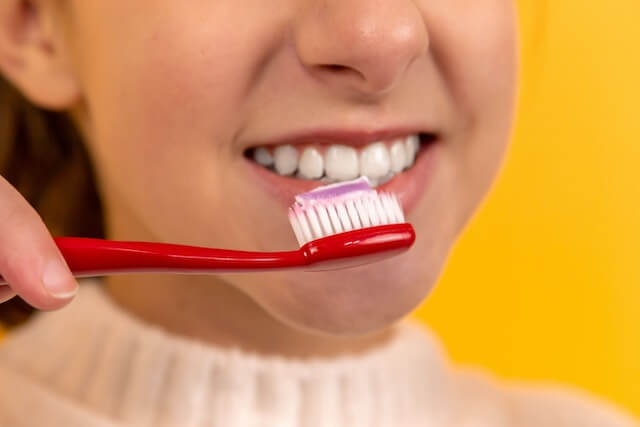Tooth decay is no joke. It sneaks up on millions of us, bringing pain, pricey dental procedures, and a big hit to our confidence. Among all the ways to protect our teeth, fluoride toothpaste often takes center stage.
But while some swear by it, others hesitate, wondering if it’s truly safe—especially for kids or those leaning toward a more natural lifestyle.
So, what’s the deal? Should you use fluoride toothpaste, or is it time to explore alternatives? Let’s break it down in plain, easy-to-digest terms so you can decide what’s best for your smile.

What Is Fluoride, and Why Is It in Toothpaste?
Nature’s Cavity Fighter
Fluoride isn’t some scary chemical cooked up in a lab—it’s a natural mineral. It’s found in water, soil, plants, and even the air we breathe. Back in the 1940s, scientists discovered something amazing: communities with naturally higher levels of fluoride in their water had fewer cavities.
That’s why cities across the U.S. started adding a little extra fluoride to tap water, leading to a massive drop in tooth decay.
But what does fluoride actually do?
The Science Behind Strong Teeth
Think of fluoride as your tooth enamel’s personal bodyguard. Cavities happen when sugar and bacteria team up to create acids that eat away at the enamel (that’s the hard, outer layer of your teeth). This process, called demineralization, weakens your teeth and opens the door to cavities.
Here’s where fluoride shines: it stops demineralization in its tracks and helps rebuild weakened enamel through a process called remineralization. Basically, it gives your teeth the extra strength they need to fight off acid attacks.
Bonus? In kids, regular fluoride exposure can actually help teeth develop a naturally stronger enamel from the start. Pretty cool, right?
The Powerful Benefits of Fluoride Toothpaste
Prevents Cavities Like a Pro
Fluoride toothpaste doesn’t just clean your teeth—it’s actively working to protect them. By restoring minerals to your enamel and creating a shield against acids, it keeps cavities at bay. This is why dentists recommend using fluoride toothpaste every day, no matter your age.
Saves You Money in the Long Run
Let’s be real: dental work can get expensive, fast. Fillings, crowns, root canals—they’re not just painful for your teeth; they hurt your wallet too. Regularly using fluoride toothpaste is one of the simplest ways to avoid those hefty dental bills.
A small investment in your toothpaste now could save you a ton of money down the line.

Understanding the Risks of Fluoride Toothpaste
Can You Have Too Much of a Good Thing?
It’s rare, but too much fluoride can cause a condition called fluorosis, especially in young kids. Fluorosis shows up as white spots or streaks on teeth and happens when children swallow too much fluoride while their teeth are still developing. The good news? It’s purely cosmetic—your teeth still work perfectly fine.
To avoid this, make sure kids only use a pea-sized amount of toothpaste and teach them to spit it out. Problem solved!
What About Natural Living?
For those looking to steer clear of additives, fluoride toothpaste might feel like a no-go. Some people worry about overexposure or prefer products without synthetic ingredients. Luckily, there are plenty of fluoride-free options out there, featuring natural ingredients like xylitol and baking soda.
While they can clean your teeth effectively, keep in mind that they won’t provide the same enamel-strengthening benefits as fluoride.
| Category |
Pros |
Cons |
|---|---|---|
| Dental Protection | Strengthens enamel and creates a barrier against cavities. | Excessive use can lead to fluorosis (mainly in children). |
| Remineralization | Restores calcium and phosphate in teeth, preventing decay. | Overuse can cause discoloration or uneven tooth surfaces. |
| Accessibility | Widely available in toothpaste, water, and other products. | Harmful if large amounts are swallowed, especially by children. |
| Cost-Effectiveness | Saves money on dental treatments by preventing cavities. | Rare cases of allergy or sensitivity to fluoride products. |
| For Children | Helps develop stronger enamel less prone to decay. | Requires supervision to avoid overuse and accidental ingestion. |
| Eco-Friendliness | Natural mineral found in water and the environment. | Might not appeal to those preferring 100% organic products. |
Fluoride-Free Toothpaste: Is It Worth It?
How Does It Work?
Fluoride-free toothpaste focuses on removing plaque and freshening breath without using fluoride. It often includes natural abrasives and plant-based ingredients to get the job done. While it’s a great option for those who want to avoid fluoride, it can’t remineralize your teeth or offer the same cavity-fighting power.
Who Should Consider Going Fluoride-Free?
- Parents of young children worried about fluorosis.
- People with personal or philosophical objections to fluoride.
- Anyone who prefers all-natural oral care products.
That said, if you’re prone to cavities or have a history of tooth decay, it’s worth sticking with fluoride toothpaste to keep your smile protected.
What About Professional Fluoride Treatments?
A Boost of Extra Protection
If you’ve ever had a fluoride treatment at the dentist, you know the drill: a quick application of gel or varnish, followed by 30 minutes of no eating or drinking. This simple treatment strengthens your enamel even more than regular toothpaste and is especially helpful for people at high risk of cavities.
Who Benefits Most?
- People with lots of dental work (like fillings or crowns).
- Those with dry mouth or a sugary diet.
- Anyone with a family history of tooth decay.
Making the Right Choice for Your Smile
So, where does that leave us? Here’s the bottom line:
- Fluoride toothpaste is a safe, effective way to prevent cavities and strengthen enamel. It’s backed by decades of science and recommended by dentists worldwide.
- Use fluoride responsibly. Keep an eye on kids’ toothpaste use, and remember: a little goes a long way.
- Fluoride-free toothpaste is a good alternative if you’re looking for natural options. Just be aware that it won’t provide the same level of cavity protection.
Still not sure which toothpaste is right for you? Talk to your dentist. They can help you choose a routine that fits your needs and keeps your smile in top shape.
Because at the end of the day, whether you go fluoride or fluoride-free, the goal is the same: a healthy, happy smile that lasts a lifetime.





